The Newark Museum of Art
The Newark Museum of Art (formerly known as the Newark Museum), in Newark, Essex County, New Jersey, United States, is the state's largest museum. It holds major collections of American art, decorative arts, contemporary art, and arts of Asia, Africa, the Americas, and the ancient world. Its extensive collections of American art include works by Hiram Powers, Thomas Cole, John Singer Sargent, Albert Bierstadt, Frederick Church, Childe Hassam, Mary Cassatt, Edward Hopper, Georgia O'Keeffe, Joseph Stella, Tony Smith and Frank Stella.
 | |
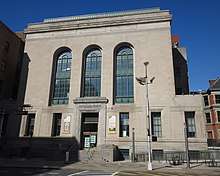 | |
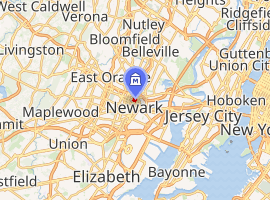
| |
| Established | 1909 |
|---|---|
| Location | 49 Washington St Newark, NJ, USA |
| Director | Linda C. Harrison[1] |
| Public transit access | Washington Park Station (Newark Light Rail) |
| Website | newarkmuseum.org |
James Street Commons Historic District | |
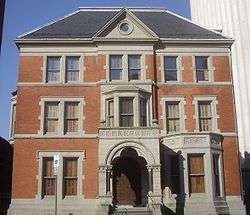 John Ballantine House | |
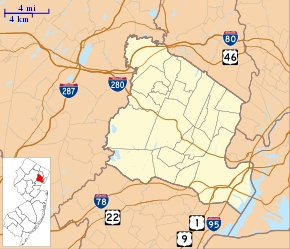 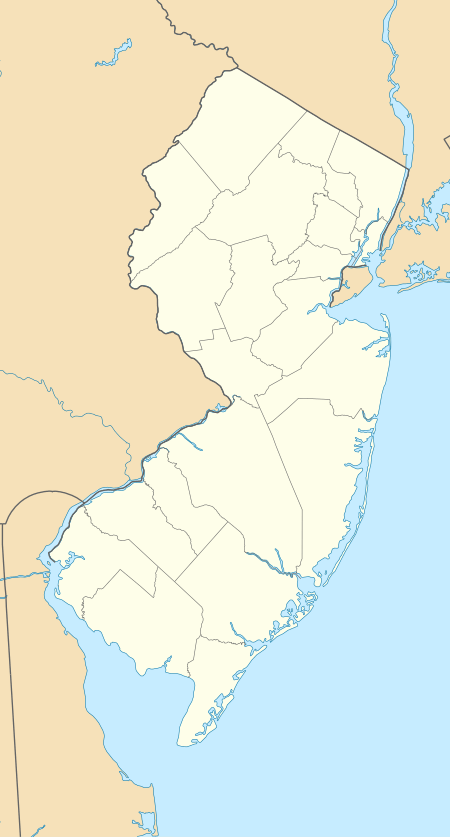  | |
| Coordinates | 40.742651°N 74.171779°W |
| NRHP reference No. | 78001758[2] |
| NJRHP No. | 1275[3] |
| Significant dates | |
| Added to NRHP | January 9, 1978 |
| Designated NJRHP | February 10, 1977 |
The Museum's Tibetan art galleries are considered among the best in the world. The collection was purchased from Christian missionaries in the early twentieth century. The Tibetan galleries have an in-situ Buddhist altar that the Dalai Lama has consecrated. In addition to its extensive art collections, the Newark Museum of Art is dedicated to natural science. It includes the Dreyfuss Planetarium and the Victoria Hall of Science which highlights selections from the museum's 70,000 specimen Natural Science Collection. The Alice Ransom Dreyfuss Memorial Garden, located behind the museum, houses numerous works of contemporary sculpture and is the setting for community programs, concerts and performances. The garden is also home to a 1784 old stone schoolhouse and the Newark Fire Museum.
The museum was founded in 1909 by librarian and reformer John Cotton Dana. As the charter described it, the purpose was "to establish in the City of Newark, New Jersey, a museum for the reception and exhibition of articles of art, science, history and technology, and for the encouragement of the study of the arts and sciences." The kernel of the museum was a collection of Japanese prints, silks, and porcelains assembled by a Newark pharmacist.[4]
Originally located on the fourth floor of the Newark Public Library, the museum moved into its own purpose-built structure in the 1920s on Washington Park after a gift by Louis Bamberger. It was designed by Jarvis Hunt, who also designed Bamberger's flagship Newark store.[5][6] Since then, the museum has expanded several times, to the south into the red brick former YMCA and to the north into the 1885 Ballantine House, by means of a four-year, $23 million renovation.[7] In 1990, the museum expanded to the west into an existing acquired building. At that time much of the museum, including the new addition, was redesigned by Michael Graves.
The museum had a mini-zoo with small animals for some twenty years, until August 2010.[8]
For the security of climate-sensitive artwork, the museum closed its front entrance to the public in 1997 to minimize the effects of temperature and humidity changes. However, in February 2018, after extensive renovation and the construction of a ramp for disabled access, the front doors were reopened.[9]
On November 6, 2019, the museum changed its name to The Newark Museum of Art to highlight the focus of the museum on its art collection which was ranked 12th in the country.[10]
The museum is open from 12 to 5 pm from Wednesdays to Sundays and is free for Newark residents.[11]
The Newark Black Film Festival is held every summer at the museum.
The Ballantine House
The Ballantine house is a preserved and restored house from the Victorian Era, designed by architect George Edward Harney. It was home to John Holme Ballantine, his wife, Jeannette, and their children, John, Robert, Alice, and Percy. Mr. Ballantine owned and ran a brewery in the Ironbound section of Newark. The house originally had twenty-seven rooms and three floors. In 1937, the Newark Museum bought the house and has since restored it to serve as galleries for the extensive decorative arts collections.
MakerSPACE at Newark Museum
The MakerSPACE at the Newark Museum is "an interactive area where visitors of all ages play, tinker and create as they make connections between the materials, processes and concepts of artwork and natural science objects in the Museum’s collections and their own creativity." [12] John Cotton Dana, the founder of the museum, believed that "the worth of a museum is in its use." [13] The museum has carried on this legacy of incorporation of the immediate community by opening a MakerSPACE. The museum even displays some of the artwork that is made in the space. The space includes many advanced tools, such as a laser cutter/engraver, 3D printers, a vinyl cutter, pottery wheels, sewing machines, relief and silk screen printing equipment, and various hand tools like saws, hammers, and screwdrivers. The MakerSPACE is open every Saturday 1-4PM for drop-in activities.
Notes
- “Newark Museum Senior Staff” Newark Museum website. Retrieved October 21, 2014.
- "National Register Information System". National Register of Historic Places. National Park Service. March 13, 2009.
- "New Jersey and National Registers of Historic Places - Essex County" (PDF). New Jersey Department of Environmental Protection - Historic Preservation Office. January 10, 2010. p. 3. Archived from the original (PDF) on March 27, 2009. Retrieved April 25, 2010.
- Alexander 1995, p. 390.
- Jarvis Hunt Buildings - math.uic.edu - Retrieved July 13, 2008
- Alexander 1995, p. 399.
- "Newark Museum | VisitNJ.org". www.visitnj.org. Retrieved 2017-12-15.
- The Mini Zoo Archived 2010-11-24 at the Wayback Machine, Newark Museum website.
- "After 20 years, Newark Museum to reopen its main entrance". NJ.com. Retrieved 2017-12-15.
- Mishkin, Leah (6 November 2019). "110-year-old Newark Museum undergoes a name change". NJTV. Retrieved 7 November 2019.
- "Newark Museum |". www.newarkmuseum.org. Retrieved 2017-12-15.
- "Newark Museum |". www.newarkmuseum.org. Retrieved 2017-12-15.
- "Newark Museum |". www.newarkmuseum.org. Retrieved 2017-12-15.
References
- Alexander, Edward P. (1995-11-01). Museum Masters: Their Museums and Their Influence. Rowman Altamira. ISBN 978-0-7619-9131-1.
External links
| Wikimedia Commons has media related to The Newark Museum of Art. |
- The Newark Museum of Art
- Dreyfuss Planetarium
- Cotter, Holland (2009-01-11). "Museums Look Inward for Their Own Bailouts". The New York Times. - article on Museum